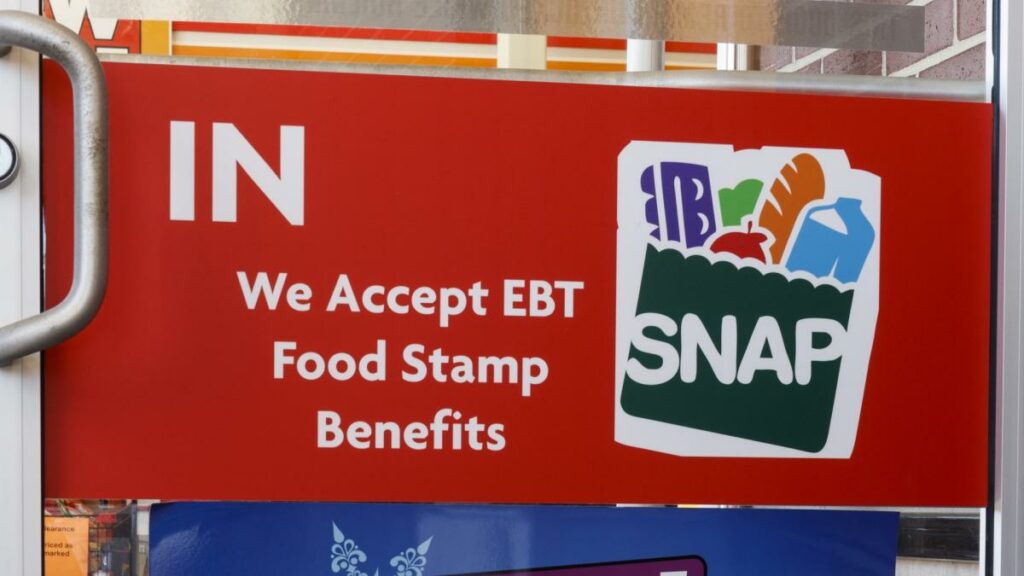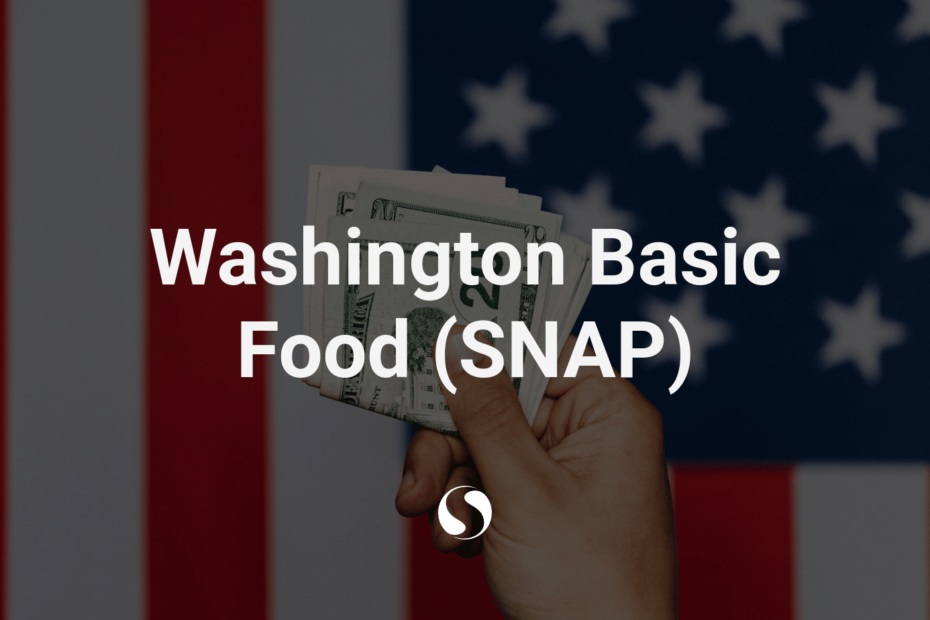The SNAP Washington: Supplemental Nutrition Assistance Program (SNAP), formerly known as food stamps, provides food-purchasing assistance for low- and no-income people.
It is a federal aid program administered by the Food and Nutrition Service (FNS) of the United States Department of Agriculture. SNAP benefits can be used to purchase food at grocery stores, convenience stores, some farmers’ markets, soup kitchens, and shelters that accept SNAP.
In Washington, SNAP is administered by the Washington State Department of Social and Health Services (DSHS). DSHS determines eligibility for SNAP benefits based on household income, resources, and certain basic expenses.
Gross Income Limits SNAP Washington 2024

| Household Size | Maximum Gross Monthly Income Limit | Maximum Monthly Allotment | Minimum Benefit |
| 1 person | $1,580 | $291 | $23 |
| 2 people | $2,137 | $535 | $23 |
| 3 people | $2,694 | $766 | $23 |
| 4 people | $3,250 | $973 | $23 |
| 5 people | $3,806 | $1,155 | $23 |
| 6 people | $4,364 | $1,386 | $23 |
| 7 people | $4,921 | $1,532 | $23 |
| 8 people | $5,478 | $1,751 | $23 |
| Each additional | $557 | $219 | $23 |
Net Income Limits SNAP Washington
| Household Size | Maximum Net Monthly Income Limit |
| 1 person | $1,215 |
| 2 people | $1,643 |
| 3 people | $2,072 |
| 4 people | $2,500 |
| 5 people | $2,928 |
| 6 people | $3,357 |
| 7 people | $3,785 |
| 8 people | $4,213 |
| Each additional person | $428 |
Asset / Resource Limit SNAP Washington
| Household Type | Asset/Resource Limit | Details |
| Households with at least one elderly (60 years or older) or disabled member | $5,750 | This higher resource limit applies if the household includes a member age 60 or older or who receives federal disability benefits. Resources of all members are counted. |
| All other households without elderly or disabled members | $3,250 | This lower resource limit applies for households where no one is elderly or disabled. Resources of all members are counted. |
| Households with disqualified member | $2,250 | This lower limit applies if the household includes a disqualified member, such as due to an intentional program violation. Resources of all members are counted. |
Resources counted towards the limit include:
- Cash on hand
- Checking/savings account balances
- Stocks, bonds, retirement accounts
- Lump sum payments
- Some vehicles – equity value over $4,650 counts
Maximum Benefit Amounts SNAP Washington
| Household Size | Maximum Monthly Allotment (Oct. 1, 2023 – Sept. 30, 2024) |
| 1 person | $291 |
| 2 people | $535 |
| 3 people | $766 |
| 4 people | $973 |
| 5 people | $1,155 |
| 6 people | $1,386 |
| 7 people | $1,532 |
| 8 people | $1,751 |
| Each additional person | +$219 |
Eligibility Criteria for SNAP Washington 2024
To be eligible for SNAP (Supplemental Nutrition Assistance Program) in Washington, households must meet certain income and resource requirements. The eligibility criteria include:
| Criteria | Details |
|---|---|
| Gross Income | – Maximum gross monthly incomes a household can make to qualify for SNAP in Washington State: – 1 person: $1,580 – 2 people: $2,137 – 3 people: $2,694 – 4 people: $3,250 – 5 people: $3,806 |
| Net Income | – Net income is calculated by subtracting certain deductions from gross income. Households with members who are 60 or older or have a disability and do not meet the gross income limit may still qualify based on their net income. |
| Asset Limit | – There is no asset limit in Washington for households with members who are 60 or older or have a disability. However, households without such members have an asset limit of $4,250. |
| Categorical Eligibility | – Households that are categorically eligible for SNAP, such as those receiving Temporary Assistance for Needy Families (TANF) or Supplemental Security Income (SSI), are exempt from the asset and gross income tests. |
| Deductions | – Households can deduct certain expenses, such as shelter costs, child support payments, and medical expenses, to calculate net income. |
| Citizenship | – U.S. citizens and certain lawfully present non-citizens are eligible for SNAP. |
| Work Requirements | – Able-bodied adults without dependents between the ages of 18 and 49 must meet work requirements to be eligible for SNAP. |
| Exceptions | – Some groups, such as children, seniors, veterans, and individuals experiencing homelessness, are exempt from certain SNAP requirements. |
| Maximum Monthly Allotment | – The maximum monthly allotment for SNAP in Washington State is based on a household’s net income. |
| Minimum Benefit | – Eligible households with one or two members qualify for at least a “minimum benefit,” which is $23 in fiscal year 2024. |
| Eligibility Requirements for Non-Citizens | – Lawfully present immigrant children, refugees, and asylees, and qualified immigrant adults who have been in the U.S. for at least five years, are eligible for SNAP. |
| SNAP Benefit Replacement | – If you lost food purchased with SNAP benefits due to a household misfortune, you may request a replacement of those SNAP benefits. |
To apply for SNAP in Washington, visit the Washington Connection website or contact your local SNAP administering agency.
How to Calculate SNAP Benefits in Washington
SNAP monthly benefit amounts are calculated based on your household size, monthly income, allowable deductions, and the maximum SNAP benefit allotment. Follow these steps to estimate your SNAP amount in Washington for 2024:
- Determine your household size – Those who live, purchase food, and cook meals together are counted as one household.
- Calculate gross monthly income – Sum monthly gross incomes of all household members before deductions. This includes earned income from jobs, social security, child support, unemployment, pensions, etc.
- Calculate net monthly income – From gross monthly income, subtract allowable deductions like housing costs, child support paid, medical costs, dependent care costs, etc.
- Compare net income to federal poverty level – Your net monthly income must be below 100% of federal poverty level to qualify for SNAP in Washington.
- Find maximum allotment – The maximum monthly SNAP benefit amount depends on your household size.
- Multiply net monthly income by 30% to find expected contribution – Households are expected to contribute 30% of their net income towards food.
- Subtract expected contribution from maximum allotment – This gives your estimated SNAP benefit amount.
This calculation process can help you determine if you may be eligible for SNAP benefits in Washington. But the most accurate way to find your specific benefit amount is to use the Washington SNAP Calculator.
If the SNAP calculator shows you may be eligible for benefits, you can submit an application to DSHS to officially apply. Here are the steps to apply for SNAP benefits in Washington:
1. Get an application form
- Online: You can fill out and submit an online application form on Washington Connection.
- Paper form: Request a paper application form by phone, mail or in-person at your local DSHS Community Service Office.
- In-person: Visit a DSHS Community Service Office near you to apply in person.
2. Fill out the application completely
- Provide all required information about identity, residence, household members, income, resources, expenses, employment status, etc.
- Attach proof documents like ID, social security cards, pay stubs, bills, medical receipts, etc.
3. Submit application to DSHS
- For online form, submit directly through Washington Connection.
- For paper form, mail completed form and documents to your local DSHS office.
- For in-person, submit in office during interview.
After applying, you will receive a notice on your eligibility status. If approved, you will be sent an EBT card to access your SNAP benefits.
SNAP Recertification in Washington
SNAP benefits are time limited and households need to recertify periodically to continue receiving assistance.
- SNAP certifications last up to 12 months in Washington. Your certification period depends on your household circumstances.
- DSHS will mail you a notice when your certification is due to expire.
To recertify for SNAP in Washington:
- Complete an interview with DSHS prior to your certification end date.
- Submit any required verification documents. Provide updated details on household status, income, resources, expenses, etc.
- If you qualify based on the updated information, your SNAP benefits will be recertified for another certification period.
- If found ineligible at recertification, your SNAP benefits will be discontinued.
It is important to complete the recertification interview on time to avoid an interruption in your benefits. Report any changes that may impact your eligibility and benefit amount.
FAQs
When you are approved for SNAP (food stamp) benefits in Washington, you will be issued an Electronic Benefits Transfer (EBT) card to access your benefits.
The Washington State Department of Social and Health Services (DSHS) will mail you the EBT card once your application is processed and benefits are assigned to your case.
The EBT card will be sent to the mailing address you provided in your application. Make sure your address is updated with DSHS.
The EBT card will be loaded each month with your allotted SNAP food benefits. These benefits can be used to purchase eligible grocery items at participating retailers.
When you receive the card, call the toll-free number on the back to activate it and set up your PIN. Keep the card and PIN secure.
If your card is lost, stolen or damaged, you can request a replacement EBT card from DSHS. Make sure to report any issues right away.
The cash assistance amount in Washington state is determined by the Temporary Assistance for Needy Families (TANF) program. The TANF benefit amount varies based on the household’s income, size, and other factors. To provide an accurate estimate of the cash assistance amount, it’s recommended to use the benefit finder tool or contact the local Community Services Office.
The TANF program aims to help low-income families stabilize their lives by providing temporary cash assistance. Eligibility for TANF is based on residency, income, and other specific criteria. To apply for TANF benefits, individuals can submit an application online through the Washington Connection website or visit a local Department of Social and Health Services office. Additionally, applicants may be required to participate in an interview to determine their eligibility.
